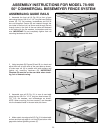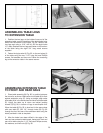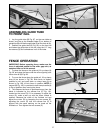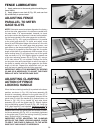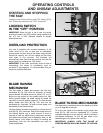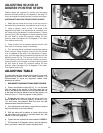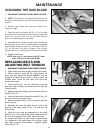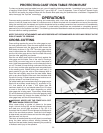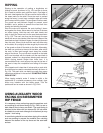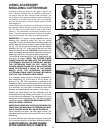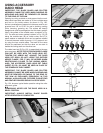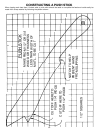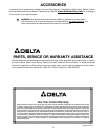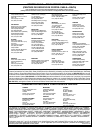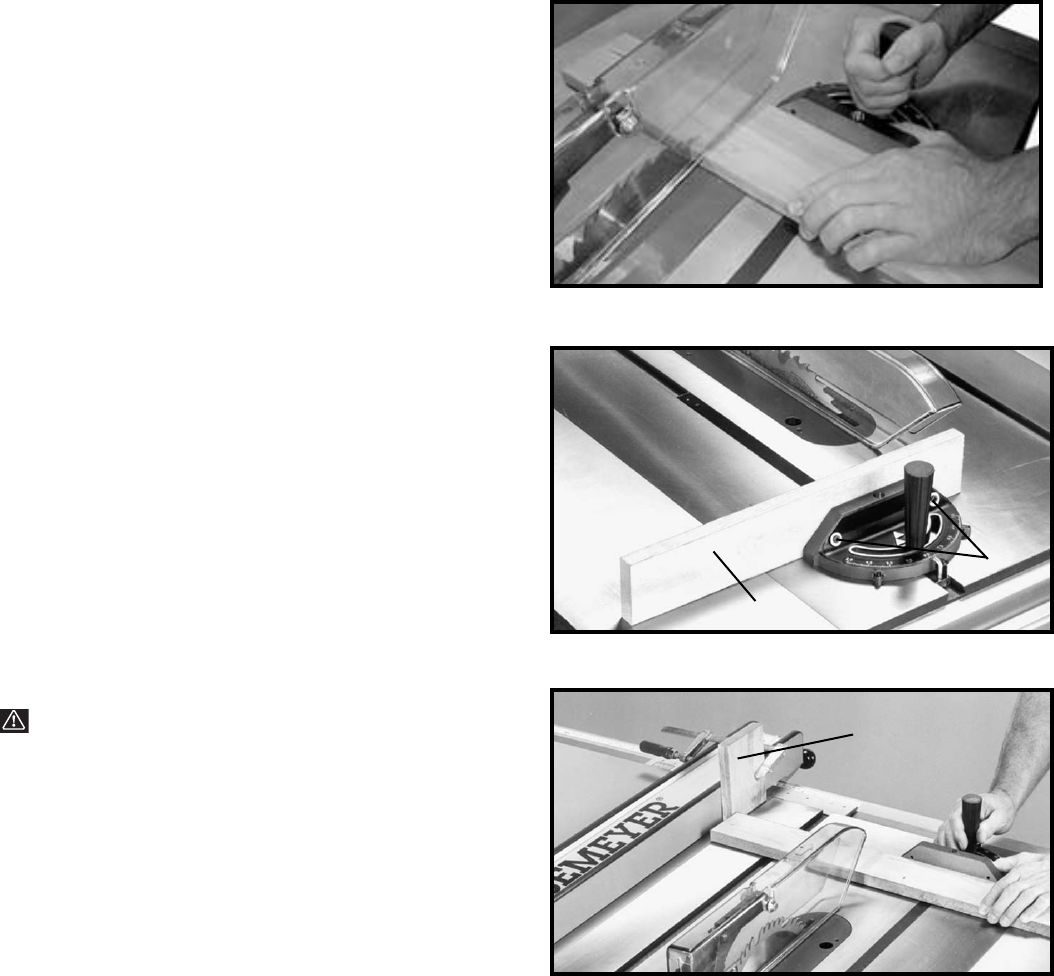
33
PROTECTING CAST IRON TABLE FROM RUST
To clean and protect cast iron tables from rust, you will need the following materials: 1 pushblock from a jointer, 1 sheet
of medium Scotch-Brite™ Blending Hand Pad, 1 can of WD-40
®
, 1 can of degreaser, 1 can of TopCote
®
Aerosol. Apply
the WD-40 and polish the table surface with the Scotch-Brite pad using the pushblock as a holddown. Degrease the
table, then apply the TopCote
®
accordingly.
OPERATIONS
Common sawing operations include ripping and crosscutting plus a few other standard operations of a fundamental
nature. As with all power tools, there is a certain amount of hazard involved with the operation and use of the machine.
Using the machine with the respect and caution demanded as far as safety precautions are concerned, will considerably
lessen the possibility of personal injury. However, if normal safety precautions are overlooked or completely ignored,
personal injury to the operator can result. The following information describes the safe and proper method for performing
the most common sawing operations.
NOTE: THE USE OF ATTACHMENTS AND ACCESSORIES NOT RECOMMENDED BY DELTA MAY RESULT IN THE
RISK OF INJURY TO PERSONS.
CROSS-CUTTING
Cross-cutting requires the use of the miter gage to posi-
tion and guide the work. Place the work against the miter
gage and advance both the gage and work toward the
saw blade, as shown in Fig. 120. The miter gage may be
used in either table slot. When bevel cutting (blade tilted),
use the left miter gage slot so that the blade tilts away
from the miter gage and your hands.
Start the cut slowly and hold the work firmly against the
miter gage and the table. One of the rules in running a
saw is that you never hang onto or touch a free piece of
work. Hold the supported piece, not the free piece that is
cut off. The feed in cross-cutting continues until the work
is cut in two, and the miter gage and work are pulled back
to the starting point. Before pulling the work back, it is
good practice to give the work a little sideways shift to
move the work slightly away from the saw blade. Never
pick up any short length of free work from the table while
the saw is running. A smart operator never touches a cut-
off piece unless it is at least a foot long.
For added safety and convenience the miter gage can be
fitted with an auxiliary wood-facing (C), as shown in Fig.
121, that should be at least 1 inch higher than the
maximum depth of cut, and should extend out 12 inches
or more to one side or the other depending on which
miter gage slot is being used. This auxiliary wood-facing
(C) can be fastened to the front of the miter gage by using
two wood screws (A) through the holes provided in the
miter gage body and into the wood-facing.
WARNING: NEVER USE THE FENCE AS A CUT-
OFF GAGE WHEN CROSS-CUTTING.
When cross-cutting a number of pieces to the same
length, a block of wood (B), can be clamped to the fence
and used as a cut-off gage as shown in Fig. 122. It is
important that this block of wood always be positioned in
front of the saw blade as shown. Once the cut-off length
is determined, secure the fence and use the miter gage to
feed the work into the cut.
This block of wood allows the cut-off piece to move freely
along the table surface without binding between the
fence and the saw blade, thereby lessening the possibility
of kickback and injury to the operator.
Fig. 120
Fig. 121
Fig. 122
C
A
B



